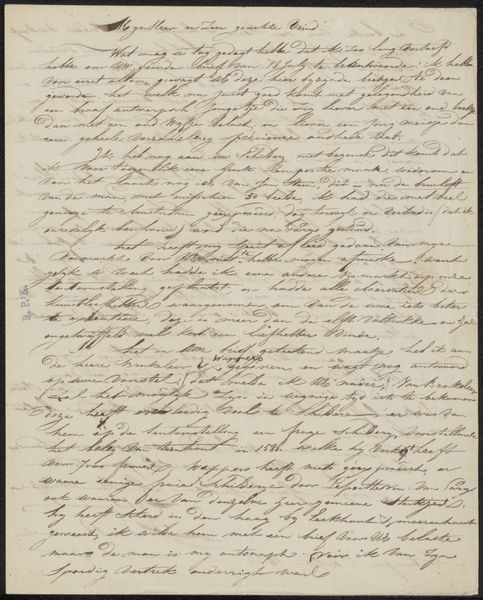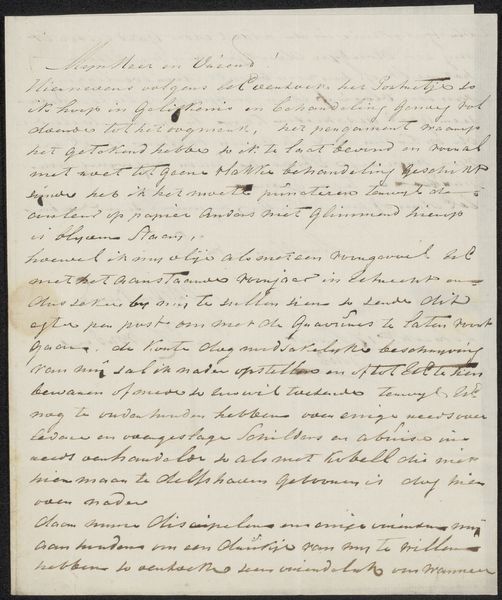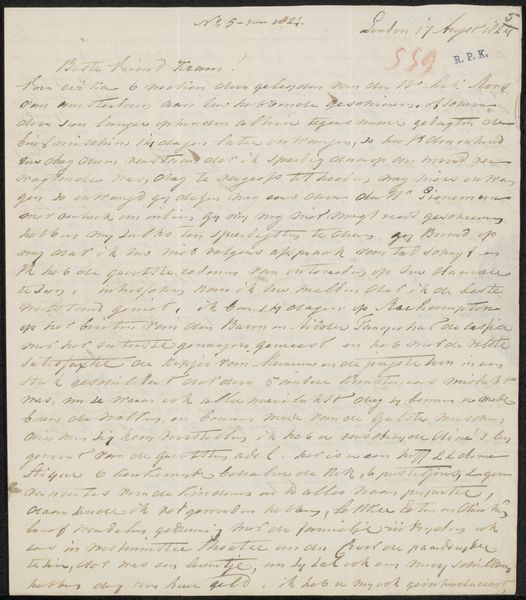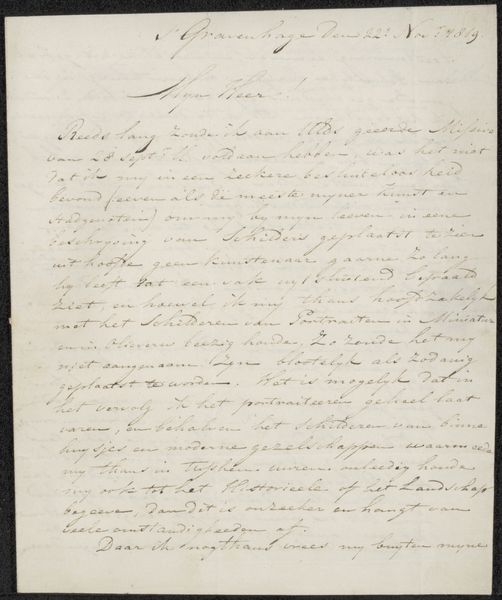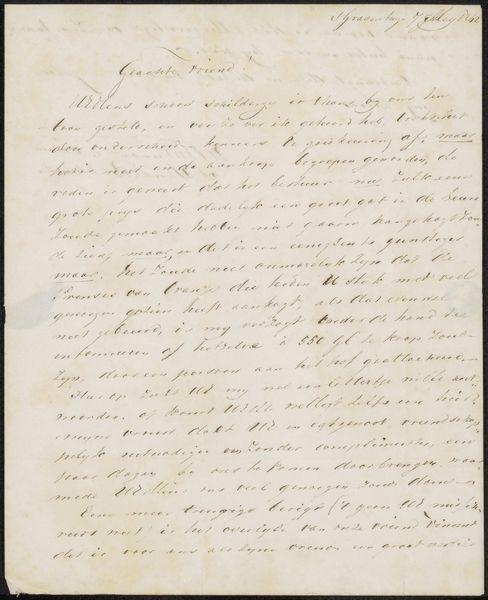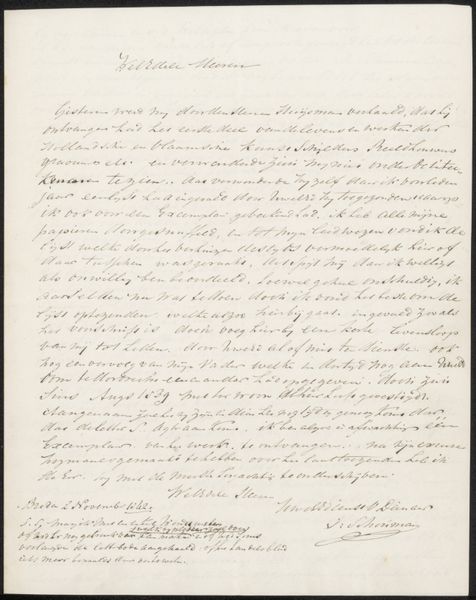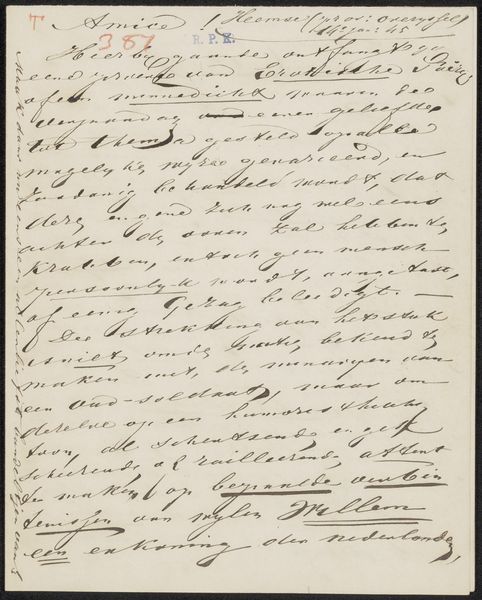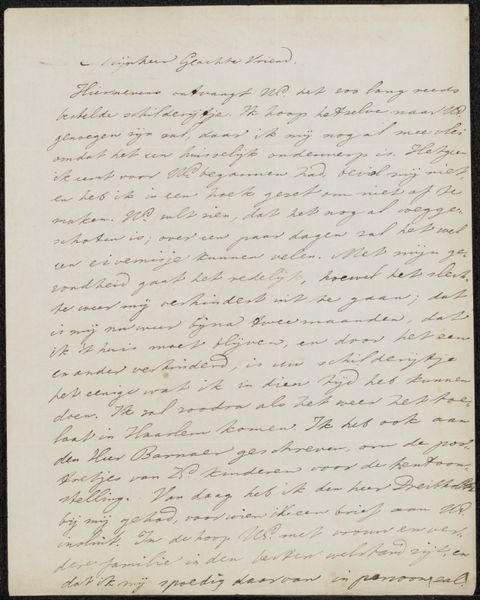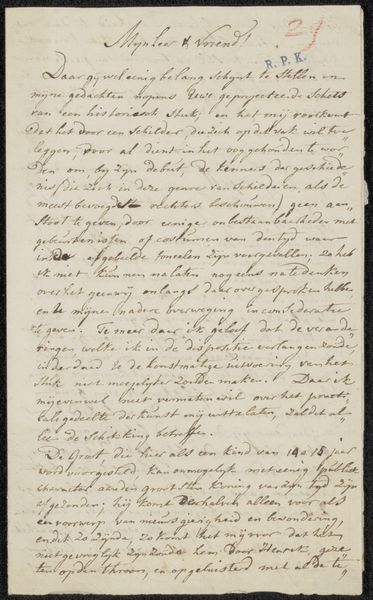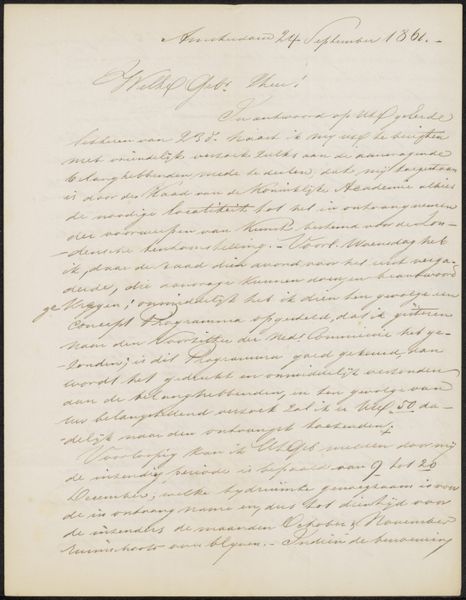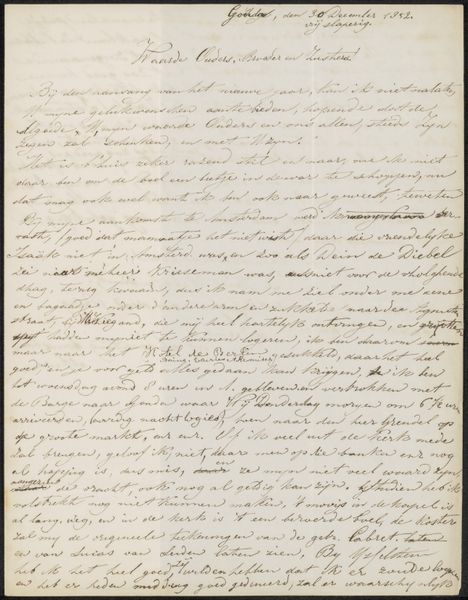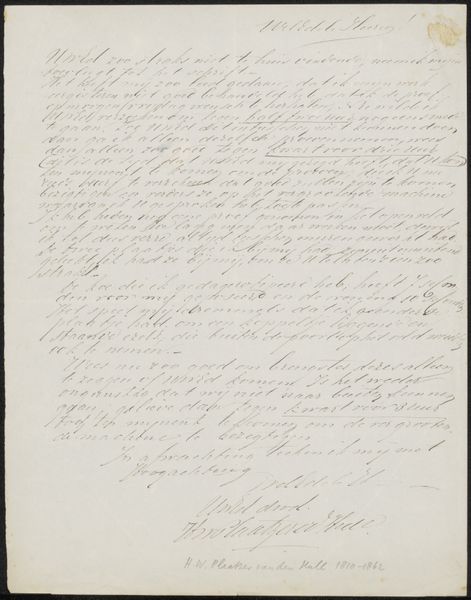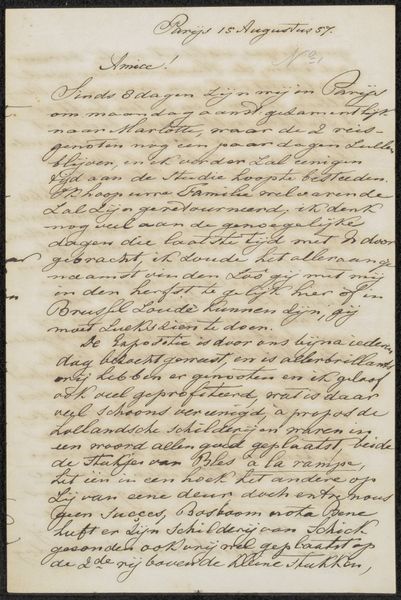
drawing, textile, paper, ink
#
drawing
#
dutch-golden-age
#
textile
#
paper
#
ink
#
calligraphy
Copyright: Rijks Museum: Open Domain
Curator: Today we are looking at "Levensbeschrijving van Willem Bartel van der Kooi," a biographical manuscript penned between 1836 and 1856. The handwriting is elegant. What do you think of it? Editor: It feels… intimate. I'm immediately drawn to the script; the strokes seem confident yet delicate, with the close kerning adding to this intensity. I can almost imagine the writer's hand moving across the paper. There’s a certain weight to it, beyond the text itself. Curator: Indeed. It's an autobiographical description of Willem Bartel van der Kooi. Van der Kooi, born in 1768, showed promise in painting early in life. We believe the materials are primarily ink on paper. Editor: The use of calligraphy suggests a formality, but the act of writing one’s own biography...that introduces a deeply personal element. It almost becomes a performance of identity. This manuscript isn't simply recording facts; it’s actively shaping a narrative, one influenced by contemporary artistic and cultural expectations. What audience was van der Kooi imagining as he wrote this? Curator: That’s difficult to know definitively, although his biography was not officially published during his lifetime. As the record shows, van der Kooi initially apprenticed with landscape painter Jurjen Beerstraaten and portrait painter Frans Swart. It looks like the goal was to ensure this biography was eventually shared widely to ensure his legacy in the art world, given the social connections the subject cultivated in the artistic community, like those to the Doornik family. Editor: So the networks that he was creating, who he knew and what they thought about him, all were critical, beyond talent, skill, and technique. It brings up so many issues concerning power, access, and historical narratives. Whose stories get told, and how are they shaped by the circumstances in which they're made and received? I suppose for me, seeing that handwriting invites those broader questions, not just about van der Kooi himself. Curator: Exactly. It is interesting to imagine what van der Kooi might think of us discussing this very personal record hundreds of years after he put pen to paper. Editor: Yes, pondering how our modern interpretations interact with this legacy offers its own narrative on this manuscript.
Comments
No comments
Be the first to comment and join the conversation on the ultimate creative platform.

